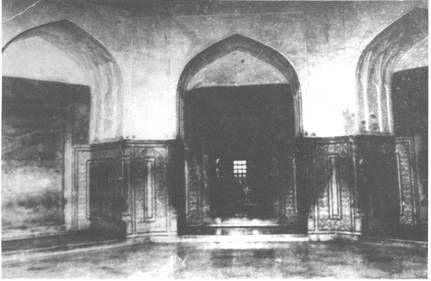No one has ever challenged it except Prof. P. N. Oak, who believes the whole world has been duped.
In his book Taj Mahal: The True Story, Oak says -
TheTaj Mahal is not Queen Mumtaz's tomb but an ancient Hindu temple palace of Lord Shiva (then known as Tejo Mahalaya ) .
In the course of his research O AK discovered that the Shiva Temple palace was usurped by Shah Jahan from then Maharaja of Jaipur, Jai Singh. In his own court chronicle, Badshahnama,
Shah Jahan admits that an exceptionally beautiful grand mansion in Agra was taken from Jai Singh for Mumtaz's burial . The ex-Maharaja of Jaipur still retains in his secret collection two orders from Shah Jahan for surrendering the Taj building. Using captured temples and mansions, as a Burial place for dead courtiers and royalty was a common practice among Muslim Rulers.
For example, Humayun, Akbar, Etmud-ud-Daula and Safdarjung are all buried in such mansions. Oak's inquiries began with the name of Taj Mahal. He says -
The term " Mahal " has never been used for a building in any Muslim countries from Afghanistan to Algeria . "The unusual explanation that the term Taj Mahal derives from Mumtaz Mahal was illogical in at least two respects.
Firstly, her name was never Mumtaz Mahal but Mumtazul-Zamani," he writes.
Secondly, one cannot omit the first three letters 'Mum' from a woman's
Name to derive the remainder as the name for the building.
"Taj Mahal, he claims, is a corrupt version of Tejo Mahalaya, or Lord Shiva's Palace . Oak also says the love story of Mumtaz and Shah Jahan is a fairy tale created by Court Sycophants, blundering historians and sloppy archaeologists not a
Single Royal Chronicle of Shah Jahan's time corroborates the love story.
Furthermore, Oak cites several documents suggesting the Taj Mahal predates Shah Jahan's era, and was a temple dedicated to Shiva, worshipped by Rajputs of Agra city. For example, Prof. Marvin Miller of New York took a few samples from the riverside doorway of the Taj.
Carbon dating tests revealed
That the door was 300 years older than Shah Jahan. European traveler Johan Albert Mandelslo, who visited Agra in 1638 (only seven years after Mumtaz's death), describes the life of the city in his memoirs. But he makes no reference to the Taj Mahal being built. The writings of Peter Mundy, an English visitor to Agra within a year of Mumtaz's death, also suggest the
Taj was a noteworthy building well before Shah Jahan's time.
Prof. Oak points out a number of design and architectural inconsistencies
That support the belief of the Taj Mahal being a typical Hindu temple
Rather than a mausoleum. Many rooms in the Taj ! Mahal have remained sealed
Since Shah Jahan's time and are still inaccessible to the public . Oak
Asserts they contain a headless statue of Lord Shiva and other objects commonly used for worship rituals in Hindu temples Fearing political backlash, Indira Gandhi's government tried to have Prof. Oak's book withdrawn from the bookstores, and threatened the Indian publisher of the first edition dire consequences . There is only one way to discredit or
Validate Oak's research.
The current government should open the sealed rooms of the Taj Mahal under U.N. Supervision, and let international experts investigate.
Do circulate this to all you know and let them know about this reality.....
Aerial view of the Taj Mahal
The interior water well
Close up of the dome with pinnacle
Close up of the pinnacle
Inlaid pinnacle pattern in courtyard
Red lotus at apex of the entrance
Rear view of the Taj & 22 apartments
View of sealed doors & windows in back
Typical Vedic style corridors
The Music House--a contradiction
A locked room on upper floor
A marble apartment on ground floor
The OM in the flowers on the walls
Staircase that leads to the lower levels
300 foot long corridor inside apartments
One of the 22 rooms in the secret lower level
Interior of one of the 22 secret rooms
Interior of another of the locked rooms
Vedic design on ceiling of a locked room
Huge ventilator sealed shut with bricks
Secret walled door that leads to other rooms
Secret bricked door that hides more evidence
Palace in Barhanpur where Mumtaz died
Pavilion where Mumtaz is said to be buried































No comments:
Post a Comment